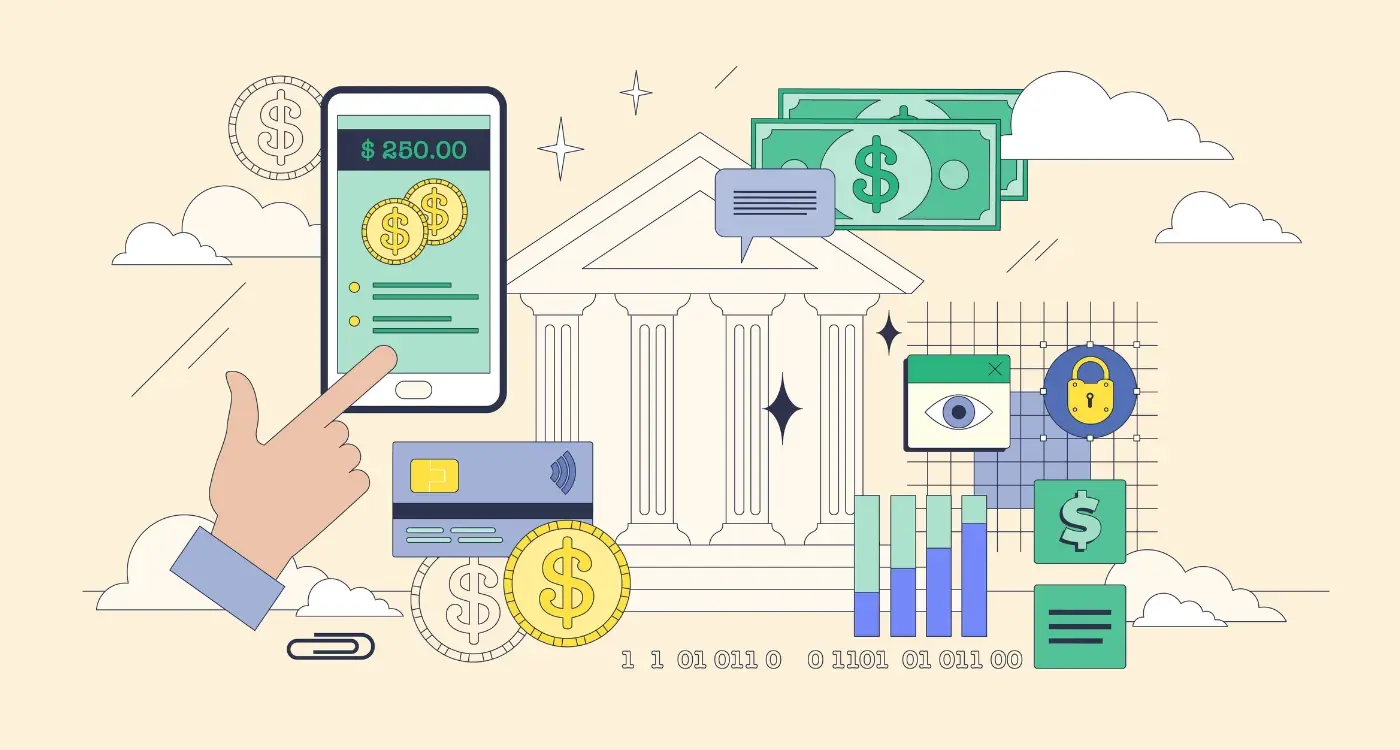How Do You Handle PCI Compliance in Fintech Apps?
Every single day, millions of people tap their phones to buy coffee, transfer money to friends, or pay bills through fintech apps. What most don't realise is that behind every transaction lies a complex web of security measures designed to protect their most sensitive information. One wrong move in payment security can cost companies millions in fines and destroy customer trust overnight.
The world of fintech moves fast, but financial regulations move faster when things go wrong. Payment Card Industry Data Security Standard (PCI DSS) compliance isn't just a box-ticking exercise—it's the foundation that keeps the entire digital payments ecosystem from crumbling. When you're building a fintech app, you're not just creating software; you're becoming a guardian of people's financial lives.
The cost of a data breach in the financial sector averages £4.5 million, but the real damage comes from the trust you'll never get back
This guide will walk you through everything you need to know about handling PCI compliance in fintech apps. We'll cover the different compliance levels, show you how to build secure payment processing into your app architecture, and help you navigate the maze of financial regulations. Whether you're a startup launching your first payment feature or an established company expanding into new markets, understanding PCI compliance isn't optional—it's survival.
What Is PCI Compliance And Why Does It Matter For Fintech Apps
Right, let's start with the basics—PCI compliance isn't just another boring technical requirement you can ignore. The Payment Card Industry Data Security Standard (PCI DSS) is a set of security rules that every business handling credit card payments must follow. Think of it as the rulebook for keeping people's card details safe.
When someone types their card number into your fintech app, that information becomes your responsibility. PCI compliance tells you exactly how to protect it, store it, and transmit it without letting hackers get their hands on it. We're talking about encryption, secure networks, access controls—the whole security package.
Why Your Fintech App Can't Skip This
Here's the thing—non-compliance isn't just risky, it's expensive. Card companies can fine you anywhere from £5,000 to £500,000 per month if you're not following the rules. Plus, if there's a data breach and you weren't compliant, you'll be liable for all the costs.
But it's not just about avoiding fines. Users trust you with their most sensitive financial information; breaking that trust destroys your reputation faster than you can say "security breach."
What This Means For Your Development Team
PCI compliance affects every part of your app development process. Your architecture needs to be secure from day one—you can't bolt security on afterwards and hope for the best.
- Card data must be encrypted both when stored and transmitted
- Your servers need regular security updates and monitoring
- Access to sensitive data must be strictly controlled
- Regular security testing is mandatory, not optional
Understanding The Different PCI DSS Compliance Levels
Right, let's break down the PCI DSS compliance levels—and trust me, this isn't as complicated as it might sound at first. The Payment Card Industry Data Security Standard (PCI DSS) has four different levels, and which one applies to your fintech app depends on how many card transactions you process each year.
Level 1 is for the big players; we're talking about merchants who process over 6 million Visa transactions annually or have suffered a data breach. Level 2 covers businesses processing 1-6 million transactions per year. Level 3 is for those handling 20,000 to 1 million e-commerce transactions annually, whilst Level 4 applies to everyone else processing fewer than 20,000 transactions.
What Each Level Means for Your App
The requirements don't change between levels—payment security standards remain the same—but the validation process does. Level 1 requires an annual on-site assessment by a Qualified Security Assessor, which can be quite intensive. Levels 2 and 3 typically need a Self-Assessment Questionnaire plus quarterly network scans, whilst Level 4 merchants usually just complete a self-assessment.
- Level 1: Annual on-site assessment required
- Level 2: Self-assessment questionnaire plus network scans
- Level 3: Self-assessment questionnaire plus network scans
- Level 4: Self-assessment questionnaire only
Most fintech startups begin at Level 4, but plan your architecture for higher levels from day one—retrofitting payment security is expensive and time-consuming.
Don't assume you'll stay at Level 4 forever. As your app grows and processes more transactions, you'll move up the levels, and the compliance requirements become more rigorous. Planning for this growth early will save you headaches later when implementing security measures for your business app.
Building Secure Payment Processing Into Your App Architecture
When I'm working with fintech clients, one of the biggest mistakes I see is treating payment security as an afterthought. You can't just bolt on secure payment processing once your app is built—it needs to be baked into your architecture from day one. Think of it like building a house; you wouldn't add the foundation after you've put up the walls!
The backbone of secure payment processing is creating separate environments for different types of data. Your app should never store sensitive payment information like card numbers or CVV codes directly. Instead, you'll want to use tokenisation, which replaces sensitive data with unique tokens that are meaningless to hackers but can still be used for processing payments.
Core Security Components
- End-to-end encryption for all payment data transmission
- Secure API endpoints with proper authentication
- Database encryption for any stored payment tokens
- Regular security audits and penetration testing
- Multi-factor authentication for admin access
Your payment processing should happen in isolated microservices that communicate through encrypted channels. This means if one part of your system gets compromised, the payment data remains protected. It's a bit more complex to build this way, but the peace of mind is worth it—and your users will thank you for keeping their financial information safe.
Data Protection And Storage Best Practices
Right, let's talk about the boring stuff that keeps me up at night—data protection and storage. I know it's not the most exciting topic, but get this wrong in fintech and you'll be dealing with more than just angry customers; you'll have regulators breathing down your neck.
The golden rule here is simple: never store card data unless you absolutely have to. And by absolutely, I mean there's literally no other way to make your app work. Most of the time, there isn't. Use tokens instead—they're like placeholders that reference the real data stored somewhere much more secure than your servers.
Encryption Is Your Best Friend
If you must store sensitive payment information, encrypt everything. We're talking about encrypting data when it's sitting in your database (at rest) and when it's moving between systems (in transit). Think of data encryption as a secret code that only authorised people can read.
The best data protection strategy is not storing sensitive data at all, but if you must, treat it like it's radioactive
Access controls are equally important—limit who can see what data and log every single access attempt. Your database should be locked down tighter than Fort Knox, with regular backups stored securely and tested frequently. Trust me, you don't want to discover your backup system doesn't work when you actually need it.
Testing And Monitoring Your Payment Security Systems
After years of working with fintech apps, I can tell you that building secure payment systems is only half the battle—you need to test and monitor them constantly. Think of it like checking your car's brakes; you wouldn't just install them and forget about them, would you?
Regular penetration testing is your best friend here. This means hiring security experts to try and break into your system on purpose. I know it sounds scary, but it's much better to find problems when you're looking for them than when hackers are!
Key Testing Areas You Can't Ignore
- Payment form security and data encryption
- Database access controls and user permissions
- Network security and firewall effectiveness
- Third-party integration security gaps
- Mobile app security vulnerabilities
Your monitoring doesn't stop after testing though. You need real-time alerts for suspicious activities—unusual login attempts, multiple failed transactions, or strange data access patterns. Most PCI compliance requirements actually mandate this kind of continuous monitoring.
Building Your Security Dashboard
I always recommend setting up automated security scans that run daily. These catch the small stuff before it becomes big problems. Your development team should receive instant notifications when anything looks off, and you should have detailed logs of every transaction and system access.
The cost of good monitoring tools might seem high, but trust me—it's nothing compared to the cost of a data breach or losing your PCI compliance status.
Working With Third-Party Payment Processors And Compliance
When building fintech apps, you'll almost certainly need to work with third-party payment processors—and honestly, this is usually the smart move. Companies like Stripe, Square, and PayPal have spent millions building secure payment systems that handle PCI compliance for you. They've got the expertise, the infrastructure, and frankly, the headaches sorted out already.
The beauty of using established payment processors is that they shoulder most of the PCI compliance burden. You don't need to store sensitive card data on your servers (which is a massive relief). Instead, you send payment information directly to their secure systems through APIs. This approach is called PCI DSS SAQ A compliance—the simplest level where you're not storing, processing, or transmitting cardholder data.
Always verify that your chosen payment processor is PCI DSS Level 1 compliant before integration. This gives you the strongest foundation for your app's payment security.
Key Requirements When Working With Payment Processors
Even when using third-party processors, you still have responsibilities. Your app must securely transmit data to the processor, validate user inputs, and maintain secure connections. You'll need to implement proper SSL certificates, secure your APIs, and regularly update your security protocols to match financial regulations.
- Implement tokenisation for recurring payments
- Use secure API endpoints with proper authentication
- Regularly update SDK versions and security patches
- Monitor transaction logs for suspicious activity
- Maintain proper user authentication and authorisation
The processor will handle the complex compliance requirements, but you're still responsible for securing the data flow between your app and their systems. This partnership approach makes PCI compliance much more manageable for fintech app developers.
Staying Up To Date With Changing Financial Regulations
Financial regulations change faster than most developers would like—and that's putting it mildly! I've watched teams scramble when new compliance requirements drop, and it's not pretty. The trick isn't just keeping up; it's staying ahead of the curve so you're not caught off guard when the next wave of changes hits your fintech app.
Setting up a proper monitoring system saves you from nasty surprises down the line. Subscribe to official PCI Security Standards Council updates, regulatory body newsletters, and industry publications that track compliance changes. Don't rely on just one source though—different organisations often interpret new requirements differently, and you want the full picture.
Building Your Regulatory Monitoring System
Your monitoring approach should cover multiple angles to catch everything that matters:
- Direct updates from PCI Security Standards Council
- Banking and financial services regulatory announcements
- Industry-specific compliance newsletters and forums
- Legal and compliance consulting firm publications
- Developer communities focused on fintech security
Creating an Action Plan for Changes
When new regulations surface, having a clear process helps you respond quickly. Start by assessing how changes affect your current implementation, then prioritise updates based on compliance deadlines and security impact. Document everything—future audits will thank you for keeping detailed records of how you addressed regulatory changes.
Conclusion
Getting PCI compliance right in fintech apps isn't just about ticking boxes—it's about building trust with your users and protecting their financial data. I've seen too many developers treat payment security as an afterthought, only to discover later that retrofitting compliance measures is far more expensive and time-consuming than building them in from the start.
The good news is that PCI DSS gives you a clear roadmap to follow. Whether you're handling Level 1 compliance with millions of transactions or working at a smaller scale, the principles remain the same: encrypt everything, limit data access, monitor continuously, and test regularly. Working with established third-party payment processors can significantly reduce your compliance burden—and honestly, for most fintech apps, it's the smartest route.
Financial regulations will keep evolving, and payment security threats aren't going anywhere. But if you've built solid foundations using the practices we've covered, adapting to new requirements becomes much more manageable. The key is staying informed, maintaining your security posture, and never assuming you're "done" with compliance.
Your users trust you with their most sensitive financial information. Meeting PCI compliance standards isn't just a regulatory requirement—it's how you honour that trust and build a sustainable fintech business.
Share this
Subscribe To Our Learning Centre
You May Also Like
These Related Guides

How Do You Get Banking App Approval From Regulators?

How Do You Handle Fraud Prevention in Financial Apps?



